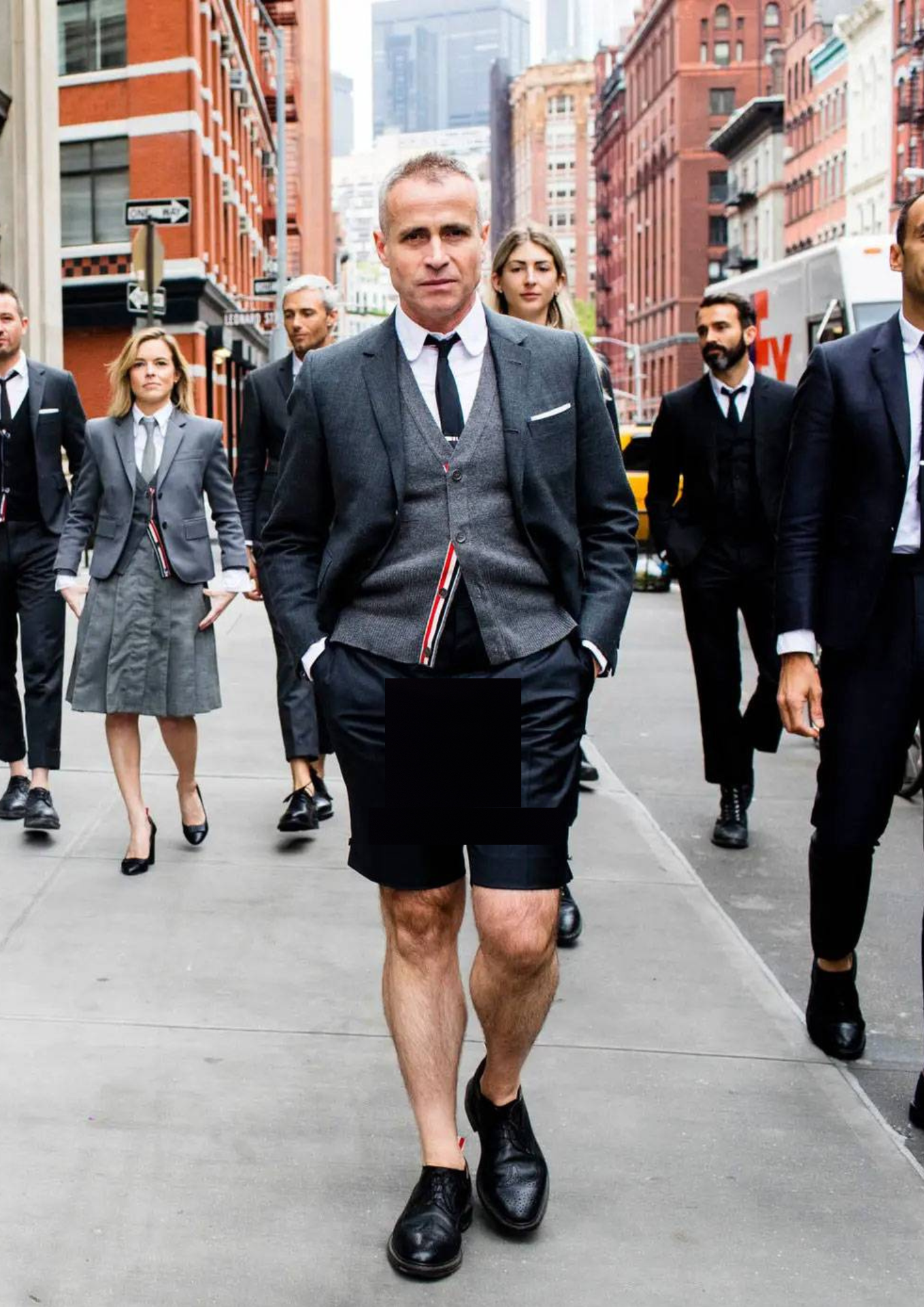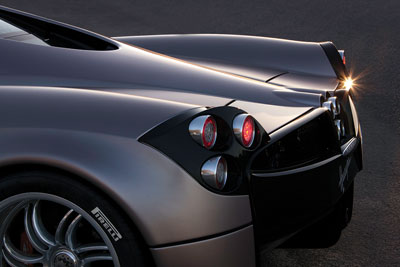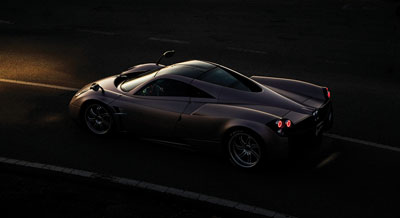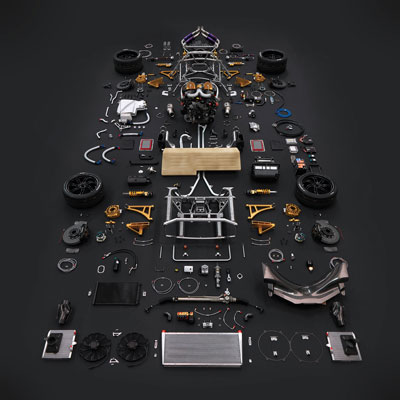by Shin Takei
2013 Pagani Huayra
According to ancient legends of the Aymara, Huayra Tata was the God of Wind who commanded the breezes, wind and blizzards of the Andean highlands. He would lift the waters off of Lake Titicaca and rain them down on the fertile Pachamama or Mother Earth. Such is the inspiration for the 2013 Pagani Huayra a supercar made to order and hand assembled in Italy for the lucky few who can fork out the estimated $1.25 million.
When I met Horacio Pagani, I was surprised how reserved and laid back he was, especially since the Huayra and its predecessor, Zonda, are visually flamboyant designs. Born in Argentina and a car freak from childhood, Mr. Pagani was inspired by Leonardo Da Vinci. He doodled cars, built models and went on to construct furniture, real vehicles and race cars. In 1983, armed with an introductory letter from Juan Manuel Fangio, the much decorated Grand Prix Champion of Argentina, he landed in the composite shop for Lamborghini and went on to develop many lightweight components of carbon fiber and titanium.
In 1991, he founded Modena Designs and continued work for Lamborghini, Ferrari, Renault, Nissan, Aprilia, Lange and Rossignol, all the while working on his first production supercar, the Zonda. The prototype Zonda C12 was shown in 1999 at the Geneva Motor Show powered by a Mercedes AMG V12. He continued improving the Zonda with 10 models and the final version, the Zonda R, is a thinly veiled aggressive race car that looks like a monster. It’s an intimidating car; you want to quickly get out of its way if you see it approaching in the rear view mirror.
With aerodynamics and supercar performance in mind, Mr. Pagani designed the Huayra to be stable and controllable at the high speeds it is capable of achieving. However, he went beyond that to incorporate safety measures that would help prevent accidents common to all supercars. Of course if you’re a bad driver, nothing can prevent you from losing control of your car.
The airflow over and around the car is managed to be smooth with air intakes for radiators designed to emulate supersonic jet fighter aircraft. The flowing lines of the composite fenders and greenhouse sweep back from the nose all the way, enhancing the elliptical shape.
During the development phase, countless hours were spent inside the wind tunnel refining the stability of the vehicle. Incorporating 4 flaps fore and aft, similar to an aircraft wing, the car is stabilized during any kind of spirited driving, including heavy braking. A monocoque chassis made of carbon fiber and titanium provides a stiff backbone that forms as the basis for the rigidity of the entire car. The power plant is an AMG sourced 5,980 cc 32 valves SOHC V12 churning out 720 hp and 738 ft-lb torque. This unit is mated to a 7-speed sequential automated manual gearbox with steering wheel mounted paddle shifters. Zero to 60 mph is claimed to be around 3 seconds. However, most owners would not be testing acceleration or the cornering limits of the Huayra. Rather, the astonishing looks and the very high degree of craftsmanship, which is apparent all over the car, is what the owner will be savoring.
Opening the gull-wing type doors reveals the out-of-this world interior that fascinates the eye. The instrument panel is reminiscent of a finely crafted Swiss watch with complications, and the switches are jewel like in appearance. Carbon fiber is utilized liberally inside, and out and applied in a perfect manner. The seats are designed to be both comfortable and supportive for spirited driving. Is this what an interior of a time machine looks like?
It takes three months to build one Huayra so you will need to be patient. The reward of owning a supercar that is at the top of exclusivity is well worth the wait. Chances are you will never see another one on the road.


































